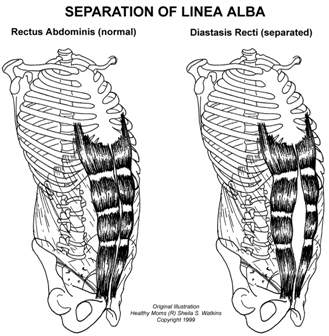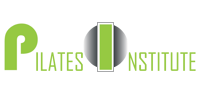Pilates & Pregnancy: Safe Ab Exercises
Pilates and Pregnancy: Safe Ab ExercisesPilates Ab exercise for pregnant women
By Debbi Goodman, MSPT
Pilates is a wonderful form of exercise for pregnant women. Through Pilates, women can stay strong and fit throughout their pregnancies. Pilates can help women stay connected to their changing body, improve posture and reduce pregnancy aches and pains. However, Pilates instructors working with this population need to be knowledgeable about the anatomical and physiological changes that occur during pregnancy, as well as about the birth process. In addition, it is extremely important that Pilates instructors have a clear understanding of how pregnancy affects the abdominal muscles.
Pregnancy: A Real Ab Stretch
During the course of pregnancy, the abdominal muscles will stretch by over 50 percent of their original length. Strengthening the abdominal muscles is critical during pregnancy to help support the growing uterus, decrease lumbar compression and reduce pelvic pressure. Women who practice safe abdominal strengthening during pregnancy have less low back pain, less pelvic pain, better mobility, easier deliveries and faster recoveries.
During pregnancy, a hormone is present, called relaxin, which helps to increase laxity of all the muscles, joints, ligaments and joint capsules. The purpose of this hormone is to increase mobility of the tissues so that the body is able to accommodate the rapid fetal growth and prepare the body for delivery. The abdominal muscles are most directly affected by the growing fetus and have the ability to stretch significantly as the fetus grows.
The Diastasis Recti
At about 20 weeks and often sooner for a second pregnancy, the rectus abdominus will begin to separate along the linea alba with the two rectus halves moving laterally. This is called a diastasis recti.

This is a normal occurrence during pregnancy, and this will occur in almost all women. However, when the diastasis recti occurs, there is less support for the lower back, which often results in an increase in low back pain or other discomforts. In addition, women who do not control the size of the diastasis may have difficulty closing it postpartum and may be at risk for an umbilical hernia, especially if there is a subsequent pregnancy without proper closure of the separation.
Exercises to Avoid During Pregnancy
Pilates instructors working with pregnant women need to pay careful attention to making sure the chosen exercises are appropriate for this group. Exercises that make the diastasis worse are any movements that require the rectus abdominus to contract strongly against gravity. When the rectus is asked to contract strongly, if the integrity of the muscle is lost, the two halves of the muscle will shorten and contract as two separate units with each half moving laterally. This, in turn, opens the separation further.
Precautions need to be taken during any supine exercises that involve lifting the head and shoulders off the ground or lifting both lower extremities off the ground, as well as during plank or push-up positions.
This means that many of the traditional abdominal exercises in the Pilates repertoire are not going to be appropriate and may be potentially dangerous with respect to opening the diastasis. Therefore, the Pilates instructor must be skilled in the ability to modify the program and knowledgeable about safe choices for pregnancy. It is also valuable for Pilates instructors to have knowledge in how to palpate a diastasis so they can screen clients who might be at risk for this abdominal muscle issue.
Safe Pregnancy Training
Safe abdominal strengthening during pregnancy should look deeper than the rectus and focus on training of the internal obliques and the transversus abdominus (TVA). Training of the TVA is particularly beneficial because contraction of the TVA directly supports the uterus, and a well toned TVA will help keep the rectus halves closer together and prevent the diastasis from opening excessively. Therefore, TVA training can reduce the size of the diastasis. In addition, training the TVA also helps women prepare for delivery, as one of the roles of this muscle is to assist during forceful expiration (i.e. pushing).
Training of these muscles can occur in all positions, but pregnant women are often most comfortable in sitting and quadruped positions, especially as the pregnancy progresses.
Gentle supine abdominal exercises—such as knee folds, heel slides, pelvic tilts and head lifts—are acceptable and are often much more challenging than one would expect as the abdominal muscles are becoming increasingly weakened.
Basic Abdominal Program for Pregnancy
Here are some examples of basic core exercises that should be included in every pregnant woman’s exercise program:
Seated or Quadruped Transversus Contraction
Helpful for minimizing diastasis, stabilizing spine and pelvis, and maintaining abdominal tone during pregnancy; essential after pregnancy. Transversus is easier to contract seated or on all fours versus lying down. Good position to begin training.
Seated Transversus: Start seated with body weight centered over pelvis and shoulders aligned over pelvis, practice pulling belly button to the spine without allowing ribcage to shear forward.
1. 30-Second Hold: Begin with a belly breath and expand the body, then exhale and move the belly button toward the spine. Hold it here for 30 counts. End with a belly breath.
2. Contracting Transverse: Same position as above. Inhale and expand body. Exhale all the way to the spine, hold for one count and then repeat 50-100 reps.
Quadruped: This position is beneficial as it takes weight off the pelvic floor and helps to increase perineum circulation.
Start on hands and knees with hands lined up with shoulders and knees lined up with hips; the spine should be neutral. If wrists are a problem, use fists on the floor. Allow belly to sag toward floor (without changing spine alignment), then pull belly button to spine maintaining neutral spine. Repeat 50-100 reps.
Supine Transversus Contraction: This is the most difficult position in which to engage the transversus due to decreased proprioception.
Start lying on the back with bent knees, feet on the floor hip-width apart. Begin exercise with a belly breath, then exhale belly to the spine without doing a posterior pelvic tilt. Exercise can be performed using the 30-second hold, contracting transversus, or use traditional abdominal stabilization techniques such as knee folds while keeping the trunk stabilized.
Sample Prenatal Mat Workout
Now that you know the basics, here’s an example of safe mat exercises for pregnant women:
Saw
Spine Twist
Modified Roll-Up/Roll-Down
Mermaid
Rowing 3,4,5,6
Spine Stretch Forward
Chest Expansion
Legs Against the Wall
Modified Hundred—kneeling or supine with one leg at a time in table top
Neck Roll—seated
Swimming—hands & knees
Shoulder Bridge
To Learn More
Working with pregnant women can be extremely rewarding, but this is a population that requires special attention. Instructors working with this population should take the time to learn about the process of pregnancy and how it affects the musculoskeletal system. Instructors need to understand the precautions of working with this group to insure that the exercise programs are meeting the needs of this unique population. See The Pilates Bookshelf: Top Pregnancy Resources for a list of my recommendations for quality books and resources about maternal fitness.
About the Author
Debbi Goodman, MSPT is a licensed manual physical therapist with specialties in women’s health, dance medicine and sports medicine. She has been a physical therapist for Westside Dance Physical Therapy, New York City Ballet, School of American Ballet and the Kane School of Core Integration. Debbi has had a private women’s health/orthopedic practice in New York City, and since moving to the Albany area in 2004, she has developed a private practice in the Capital District. Debbi is one of the few physical therapists trained in internal evaluation and treatment of the pelvic floor muscles. In addition, she is specifically skilled in treatment of pregnancy problems including: sciatica, back/neck pain, pelvic pain and rib pain, and postpartum problems including: cesarean section recovery, urinary incontinence, pelvic/vaginal pain and post-delivery scars. Debbi also teaches continuing education workshops for physical therapists, trainers and Pilates instructors focusing on educating professionals on exercise during pregnancy, and she is an instructor for prenatal and postpartum group fitness classes.
RELATED ARTICLES
The Pilates Bookshelf: Top Pregnancy Resources
Restoring the Floor While Integrating the Core: 6 Essential Moves for Postpartum Health, by Dawn-Marie Ickes
Studio Profile: Centered
